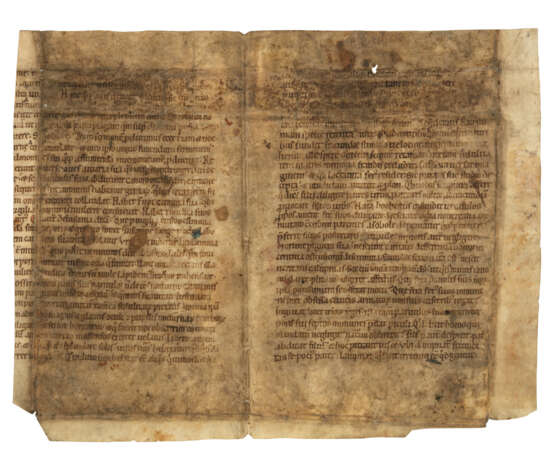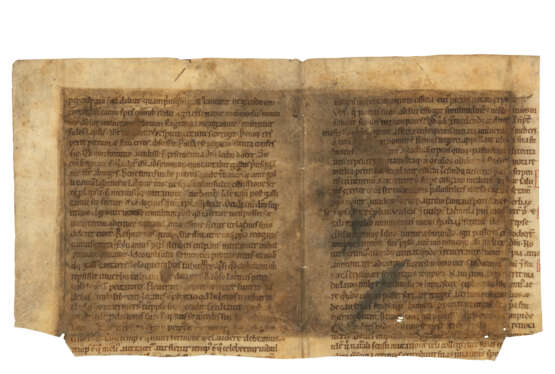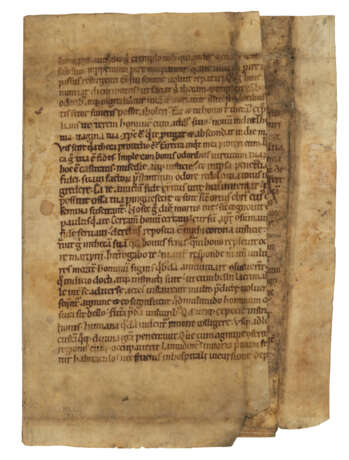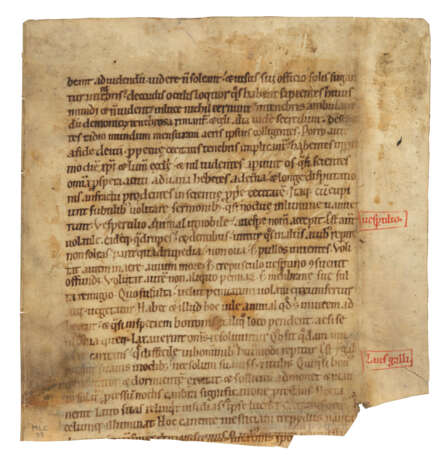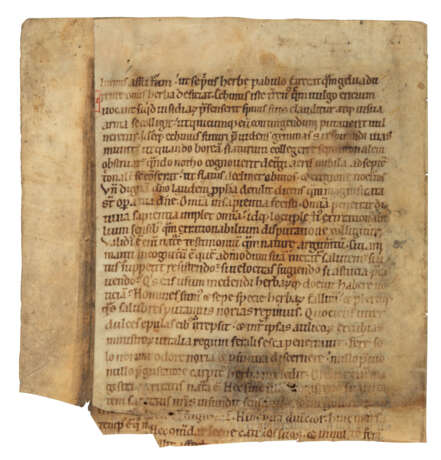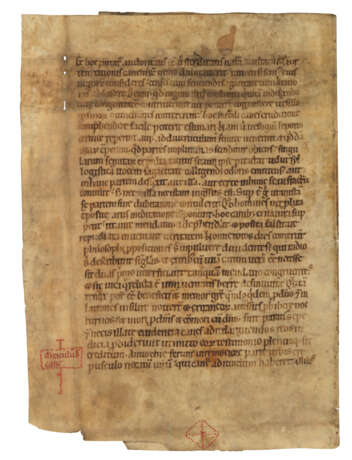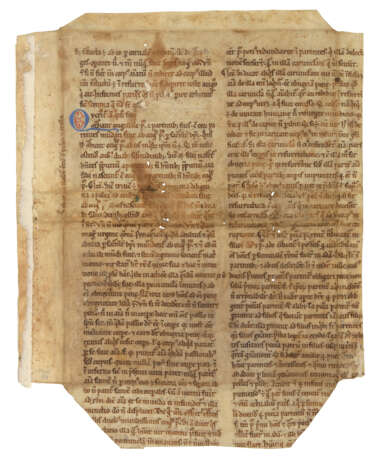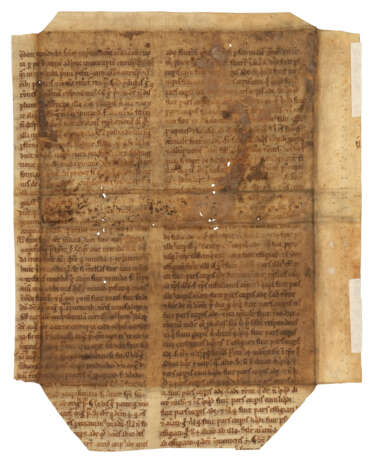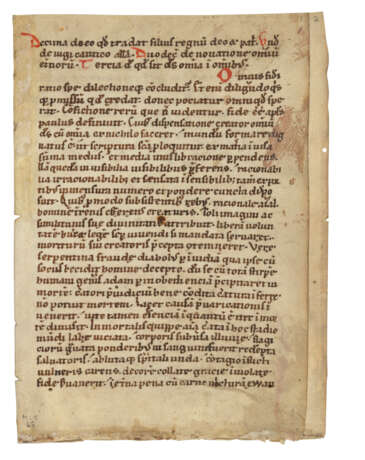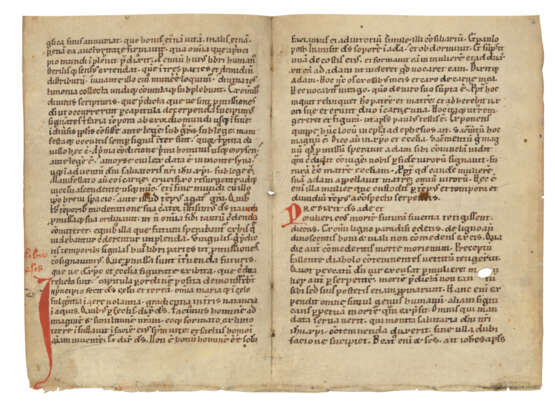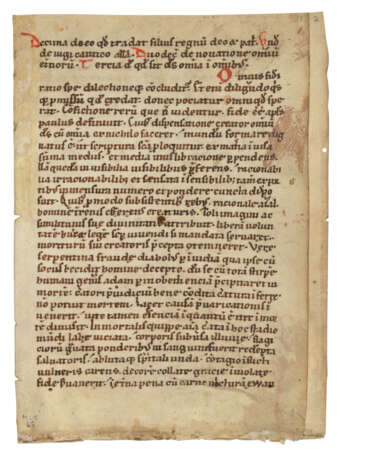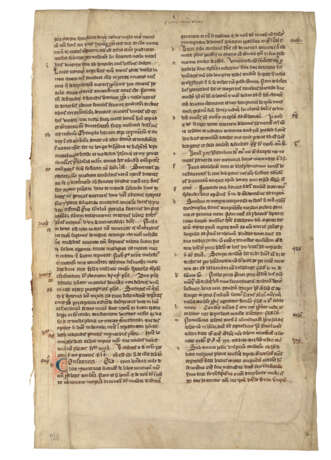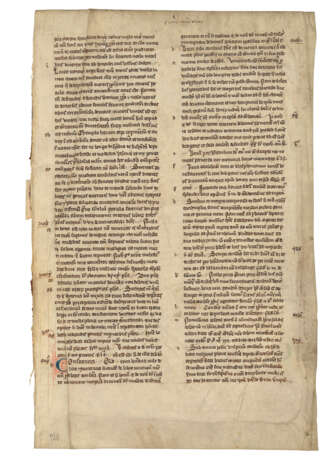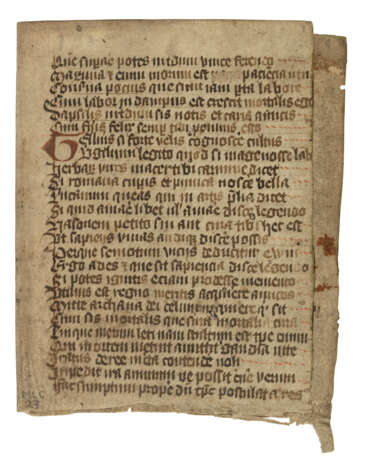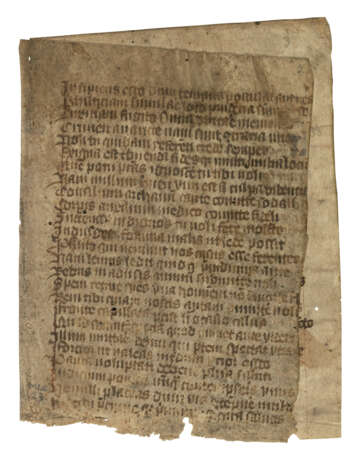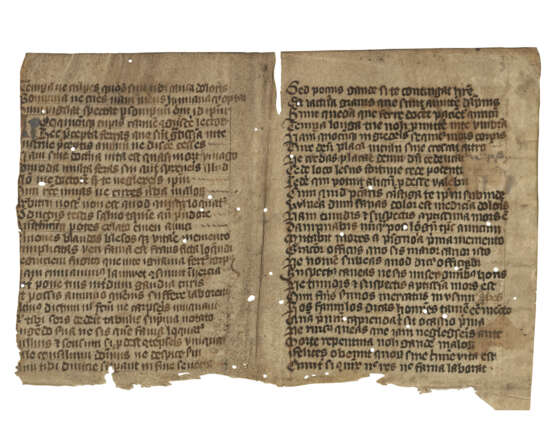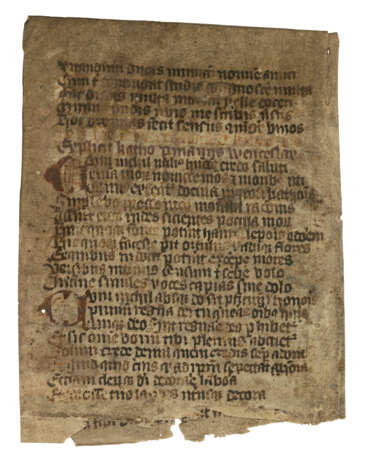ID 869569
Lot 162 | A Study Group
Estimate value
£ 4 000 – 6 000
A study group of leaves and fragments, in Latin, manuscripts on vellum [12th to 15th centuries]
A selection of theological and literary manuscripts from Western Europe, with a fifteenth-century Manual of wisdom and courtly behaviour and a copy of one of the great medieval florilegia.
Comprising:
(i) A gathering of four leaves from Ambrose, Hexameron [Germany, 12th century].
c.205 × 280mm. 28 lines, ruled in plummet, written in a protogothic bookhand, with marginal rubrics; text comprising part of St Ambrose's Hexameron, Book 5-6, with one bifolium lacking between ff.2 and 3 (foliated in modern pencil, all leaves have been used in binding, part of ff.1-3 cropped with text lacking, some text on f.4 very faded).
Provenance: Colker MS 33; acquired in 1963 from Salloch.
(ii) A partial leaf from Petrus Pictaviensis, Sententiae [France?, 12th century].
c.255 × 203mm. 2 columns of 40 lines, with a double row of pricking visible on the fore-edge, in a protogothic bookhand with a penwork initial in blue and red ink; text comprises part of Book 2, Chapter 19 on the topic of original sin; see Patrologia Latina, 211, 1016-1020 (lower leaf and gutter margin cropped, some darkening and fading of text throughout from use as a cover, remains of adhesive in one margin).
Provenance: Colker MS 58; acquired in 1964 from Dawson’s Book Shop, Los Angeles.
(iii) A bifolium from [Quodvultdeus], De Promissionibus et praedictionibus Dei [Germany, 12th century].
c.205 × 150mm. 31 lines, blind-rule with pricking visible on the fore-edge, written in a protogothic bookhand, inclined to the right; text comprising part of the De Promissionibus from the prologue ('Tempus ante legem') to the first lines of chapter 4, preceded by opening lines of a numerological nature, not from the main text; see Patrologia Latina, 51, 0733-0858. The text is often attributed to Quodvultdeus, a fifth-century bishop of Carthage who wrote extensively against Arianism (upper and out margins cropped, very minor holes and staining).
Provenance: Colker MS 65; acquired in 1964 from Maggs.
(iv) A leaf from Thomas de Hibernia, Manipulus Florum [England, 14th century].
c.310 × 200mm. 2 columns of 52 lines, ruled in plummet, in a gothic script, with pen-drawn initials with ornamental flourishes in red and blue, and alphabetical indices in margins; with text from Thomas of Ireland's great florilegium, which he compiled from sources at the Sorbonne library. The Manipulus Florum is a good example of early developments in mise-en-page to facilitate the organisation and indexing of information; see Richard and Mary Rouse, Preachers, florilegia and sermons: studies on the Manipulus florum of Thomas of Ireland (Toronto, 1979), pp. 3-4; (remains of adhesive in margins on verso).
Provenance: Colker MS 149; acquired in 1969 from Maggs.
(v) Two bifolia from a Manual, in verse [Bohemia, 15th century].
c.120 × 155mm. 25 lines, ruled in plummet, in a gothic script, scribe names himself "Wenceslaus" in the rubric on f.3v ("Explicit Katno p[er] manus Wenceslav"); text comprises part of the anonymous classical work known as Catonis Disticha, with one leaf missing, and the beginning of an anonymous courtly manual known as Facetus ("Cum Nihil Utilius" version). These texts were always transmitted together in a German context; see Leopold Zatočil, Cato a Facetus. Pojednání a texty. Zu den deutschen Cato- und Facetusbearbeitungen. Untersuchungen und Texte (Brno, 1952) (leaves cropped unevenly, small holes throughout).
Provenance: Colker MS 23; acquired in 1958.
| Auction house category: | Medieval & renaissance manuscripts |
|---|
| Auction house category: | Medieval & renaissance manuscripts |
|---|
| Address of auction |
CHRISTIE'S 8 King Street, St. James's SW1Y 6QT London United Kingdom | |
|---|---|---|
| Preview |
| |
| Phone | +44 (0)20 7839 9060 | |
| Buyer Premium | see on Website | |
| Conditions of purchase | Conditions of purchase |
